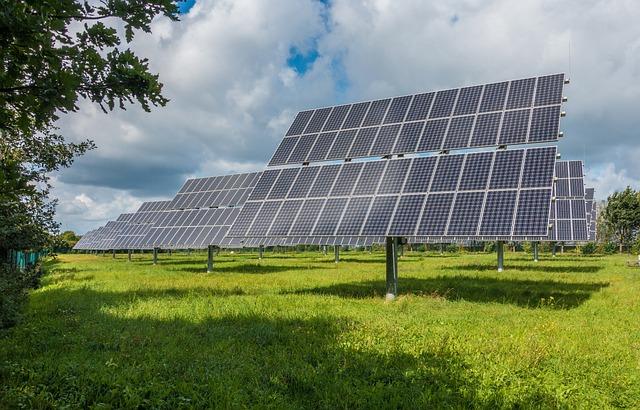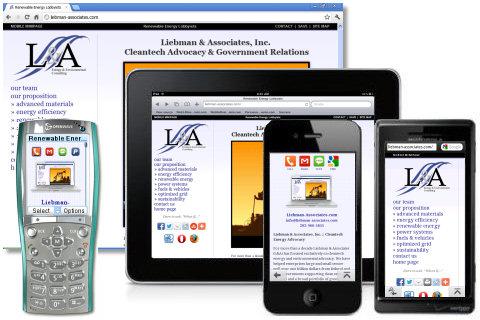In a world increasingly powered by innovation and sustainability, corporations are turning their gaze skyward, tapping into the vast, untamed potential of the sun. As the global dialogue around renewable energy intensifies, solar energy emerges as a beacon of promise and possibility. This silent revolution is not just reshaping the energy landscape but also redefining corporate strategies and priorities. From tech giants to manufacturing behemoths, companies are investing in solar energy, driven by the twin imperatives of environmental stewardship and economic advantage. This article explores the myriad ways in which corporations are harnessing the power of the sun, illuminating a path towards a brighter, more sustainable future.
Corporate Solar Revolution Energizing Tomorrow
In recent years, the surge of corporate investment in solar energy has been nothing short of transformative. Major companies are increasingly recognizing the dual benefits of renewable energy—sustainability and cost-efficiency. This shift is largely driven by the desire to reduce carbon footprints and align with global environmental goals. Furthermore, as solar technology becomes more affordable and efficient, businesses are finding it a financially viable alternative to traditional energy sources. Corporate giants across industries are taking bold steps to harness the power of the sun, integrating solar solutions into their operations and strategies.
- Tech Leaders: Companies like Google and Apple have invested heavily in solar farms, aiming for 100% renewable energy usage.
- Retail Titans: Walmart and Target are installing solar panels on store rooftops, significantly cutting energy costs.
- Automotive Innovators: Tesla and General Motors are developing solar-powered solutions for both factories and products.
These investments are not merely about optics or compliance; they represent a strategic pivot towards a more resilient and sustainable future. As corporations continue to innovate and expand their solar portfolios, they not only reduce dependency on fossil fuels but also set a precedent for others to follow. This corporate solar revolution is paving the way for a brighter, cleaner tomorrow.

Strategic Investments in Solar Technologies
In recent years, corporations have increasingly recognized the multifaceted benefits of investing in solar technologies. By adopting solar energy, companies are not only aligning with global sustainability goals but also enhancing their financial performance. Many industry leaders are channeling resources into solar infrastructure to reduce their carbon footprint and hedge against volatile energy markets. These strategic investments often include initiatives such as:
- Establishing large-scale solar farms to supply energy for corporate facilities.
- Partnering with solar technology startups to drive innovation and efficiency.
- Integrating solar panels in corporate buildings and factories.
Such moves are driven by the dual incentives of cost savings and improved brand image, as consumers increasingly favor environmentally responsible companies. By harnessing the power of the sun, corporations are not only contributing to a sustainable future but also securing a competitive edge in an ever-evolving energy landscape.

Navigating Financial Incentives for Solar Integration
As corporations increasingly pivot towards renewable energy sources, understanding the landscape of financial incentives becomes crucial. Many governments and institutions offer a plethora of incentives designed to offset the initial costs and promote long-term savings for businesses. These incentives can take several forms:
- Tax Credits: Corporations can benefit from federal or state tax credits, which directly reduce the amount of tax owed. This can significantly lower the overall investment needed for solar infrastructure.
- Grants and Rebates: Various programs provide grants or rebates that cover a portion of the solar installation costs, making it more financially feasible for businesses to adopt solar technologies.
- Depreciation Benefits: The Modified Accelerated Cost Recovery System (MACRS) in the U.S. allows businesses to recover solar investments through depreciation deductions, enhancing cash flow and profitability.
- Performance-Based Incentives (PBIs): These offer payments based on the actual energy produced by the solar system, encouraging optimal performance and efficient energy production.
By strategically leveraging these financial incentives, corporations can not only minimize upfront costs but also enhance their sustainability credentials, positioning themselves as leaders in the green energy transition.

Recommendations for Maximizing Solar Energy Returns
To harness the full potential of solar energy investments, corporations should consider a multi-faceted approach that aligns with both economic and environmental goals. Prioritize site selection by identifying locations with optimal sunlight exposure and minimal shading to ensure maximum efficiency. This often involves geographical analysis and the use of solar mapping technologies. In addition, leverage advanced photovoltaic technologies that promise higher energy conversion rates and lower maintenance costs. Emerging technologies such as bifacial solar panels or perovskite solar cells can offer substantial returns on investment.
- Implement energy storage solutions: Pair solar installations with battery storage systems to store excess energy, ensuring a reliable power supply even when the sun isn’t shining.
- Engage in regular maintenance: Establish a routine maintenance schedule to keep solar panels clean and functioning efficiently, which can significantly extend their lifespan and enhance performance.
- Utilize smart energy management systems: Adopt AI-driven systems to monitor energy consumption and adjust usage patterns, optimizing the balance between production and consumption.
Collaborate with local governments to benefit from available incentives, such as tax credits or subsidies, which can further enhance the financial viability of solar projects. By taking a strategic approach to solar energy investments, corporations can not only reduce their carbon footprint but also achieve substantial economic gains.
Final Thoughts
As the sun sets on our exploration of , it becomes clear that this shift towards sustainability is not just a trend, but a transformative journey. These corporate giants, once driven solely by profit margins, are now embracing the boundless potential of solar power, illuminating pathways to a greener future. With every solar panel installed and every kilowatt harnessed, they are not only reducing their carbon footprint but also redefining their role in the global ecosystem.
In this dance between commerce and conservation, companies are learning to harmonize profitability with responsibility, creating a symphony of innovation that resonates across industries. As they continue to invest in solar energy, they are investing in a legacy that will shine for generations to come, proving that the power of the sun is more than just an energy source—it is a beacon of hope and a catalyst for change.
As we conclude this chapter, let us remain curious and vigilant, watching as these seeds of solar investment take root and flourish, transforming the corporate landscape into one that is as bright and sustainable as the energy they harness.

































